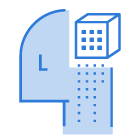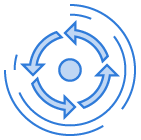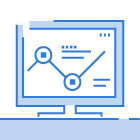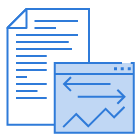
Data Mining
Data mining solutions help users discover and report valid knowledge retrieved from heterogeneous sources within and beyond a company. Such tools are efficiently applied in finance and banking to detect fraudulent actions, in marketing to use previously collected data for new campaigns, in manufacturing to detect optimal control parameters. These are just a few examples, and the actual application range is really wide.

Data Storage
As businesses rely on a skyrocketing number of software products that handle different types of data, they need a unified powerful solution for successful management and storage of all such data. Intelligent storage platforms (for instance, Hadoop) are capable of processing enormous volumes of diverse information stored on numerous servers, thus producing analytical results at a higher speed and lower cost.

Data Processing
Such software can successfully blend and process data from different sources – from flat files to Big Data storages. They utilize relational and binary data and convert this information into a rich vein of reliable source for analysis that can give enterprises an edge over their competitors.

OLAP/OLTP tools
OLAP/OLTP analysis is a powerful tool as it lets users analyze and arrange data in complex and detailed structures. Most databases are two-dimensional (for instance, a relational database with rows and columns), while OLAP/OLTP data is multidimensional – the data is grouped into dimensions and measurements. Users thus conduct more accurate analysis by comparing, analyzing and processing information utilizing such analytical tools as consolidation, slicing, dicing and more.

Dashboards
Custom dashboards use underlying reports as data sources and support data visualization to provide users with real-time insights and analytics. For instance, enterprises employ BI dashboards to monitor the status of KPIs and other parameters that showcase a performance level of a single business unit or entire enterprise.

Reporting tools
These solutions allow users to create custom reports of any complexity including ad-hoc, real-time, strategic, forecast, scheduled and other types. Data stored in different places can be collected in one place according to the customer’s business rules. Reporting tools are often combined with data processing, OLAP/OLTP and visualization components for more precise data representation.